I'm looking for an alternative to conductive thread (since I lack some sewing skills). I have seen silver conductive pens but I'm wondering if they could be used for clothing?
8 Answers
See http://www.plusea.at/ for all kinds of wearable electronics. Gluing strips of conductive fabric is probably better than conductive glue.
How To Get What You Want by the same people has more details:


Maybe conductive glue will work on fabric. It is definitely cheaper than the CirquitWriter pen so if it doesn't work, there's not much harm :) "Wire Glue" is being sold in the US but you can also try to make your own by mixing graphite and glue. There is an instructable that explains the process.
- 2,271
- 15
- 18
Xerox has just announced a silver ink for wearable and throwaway electronics. I think it's a bit early to use in your projects. The Silver Pen is an interesting idea. I don't know if it'll work!
- 17,131
- 37
- 56
- 91
- 4,697
- 8
- 41
- 61
The Arduino Lilypad is a microcontroller board designed for wearables and e-textiles. Google this one and you will find tutorials and details. Also here is a good book about making electronics click with clothes:
Open Softwear 2nd Edition ISBN: 978-91-97-95540-9
- 17,131
- 37
- 56
- 91
- 31
- 1
I'm not sure how practical this would be, but screenprinting might be an option. Using a screen with a coarse mesh you can print with silver paint. You would need to do a test to make sure the paint is conducting in the way you expect. I have some articles and notes on my blog pages that might help.
Screenprinting has the advantage that you can quickly make many prints of your circuit or make t-shirts to promote your event/exhibition/party.
- 285
- 2
- 8
Yet another alternative to conductive thread: wire.
wire-wrap wire (30 AWG) or magnet wire is pretty lightweight and flexible, although constant flexing will eventually make it break.
stranded wire is a bit thicker and heavier, but it will survive flexing longer.
I imagine you would lay it out in a sort of zig-zag or sinewave curve, gluing the midpoints, so that there's a bit of slack between each glue spot to allow the fabric to stretch a little.
- 17,426
- 11
- 66
- 115
Here is a source for all sorts of conductive paints. http://www.lessemf.com/paint.html Some of them would probably work for painting directly on fabric.
- 1,132
- 8
- 12
Depending on the conductivity you need, there might be a solution with fabric made for clothing worn in ESD-protected areas. They contain conductive fibers to discharge static electricity. They do not necessary have a very low resistance, but might be conductive enough to sport some signal path.
You could buy such a fabric which has a conductive thread every cm horizontally and vertically. Then you can cut those threads at specific points so that it builds a kind of schematic.
A different problem is, how you can connect the threads to other circuit elements. I think conductive epoxy used in small drops might do the trick.
- 3,846
- 3
- 23
- 43